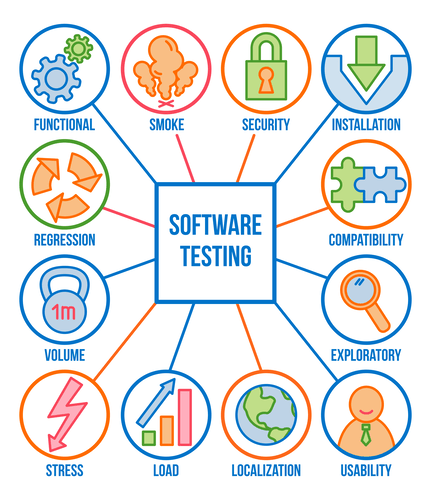Splunk can ingest data from a wide range of sources, including logs, metrics, and events generated by CI/CD pipeline tools and processes. CI/CD is important because it helps development, security, and operations teams work as efficiently and effectively as possible. It decreases tedious and time-consuming manual development work and legacy approval processes, freeing DevOps teams to be more innovative in their software development.
Continuous delivery is actually an extension of CI, in which the software delivery process is automated further to enable easy and confident deployments into production at any time. When practicing continuous integration, developers frequently integrate their code into a main branch of a common repository. Rather than building features in isolation and submitting each of them at the end of the cycle, a developer is able to contribute software work products to the repository several times on any given day. Cloud-native app development, particularly the use of microservices, does present some challenges for CI/CD pipelines.
Stages of the CI/CD pipeline
Development teams have adapted to the shortened delivery cycles by embracing automation across their software delivery pipeline. Most teams have automated processes to check in code and deploy to new environments. These adaptations have birthed the CI/CD process and have been coupled with a focus on automating the testing process, including unit testing.

CD is an elaborate automation of the build and testing processes, but decisions about when, how, and what should be released remain a manual process. Continuous deployment can free up time for those discussions by automating all the other steps. Before discussing CI/CD best practices, it’s essential to understand the CI/CD process. In general terms, a CI workflow integrates code changes as often as possible via the build automation process.
Always Search for Areas of Improvements
Monitoring is not a one-time activity, but a continuous process that involves feedback loops between developers, testers, operations, and customers. You should implement continuous feedback loops that enable you to monitor the impact of your code changes, detect and fix errors, improve performance, and deliver value. For example, you may use a tool like Jenkins, GitHub Actions, or GitLab CI/CD to automate your monitoring tasks and trigger alerts, notifications, or actions based on your metrics. You may also use a tool like Jira, Slack, or Teams to communicate and collaborate with your team and stakeholders. CD enables developers to deploy regular software changes (new features, improvements, bug fixes) to different environments and end-users at any time.
- As with most aspects of continuous integration, a mixture of process, tooling, and habit will help make development changes more successful and impactful.
- We achieve all this by ensuring our code is always in a deployable state, even in the face of teams of thousands of developers making changes on a daily basis.
- However, we should test multiple endpoints with more than one test phase to mimic real-world load testing scenarios.
- Early stages are meant to prove that it’s worthwhile to continue testing and pushing the changes closer to production.
- Key DevOps metrics help you understand whether the team delivers value to users quickly and which stages of the pipeline need optimizations.
When the CI/CD strategy is automated, ops leaders can focus more of their time on system stability and less time on workflow issues. Let’s discuss some of the critical aspects of a healthy CI/CD pipeline and highlight the key metrics that must be monitored and improved to optimize CI/CD performance. The Ansible OpenTelemetry plugin integration provides visibility into all your
Ansible playbooks. The plugin generates traces for each run and performance metrics to help
you understand which Ansible tasks or roles are run the most, how often they
fail, and how long they take to complete.
Monitoring and Logging: The Treat of Visibility, The Trick of Overload
Cloudbees even offers several different Jenkins training programs and product add-ons. No proper discussion on monitoring can be complete without contrasting it with observability. Tekton seamlessly integrates with a variety of popular CI/CD tools such as Jenkins, Skaffold, and Knative, among others, making it a flexible choice for organizations with varying requirements.

IaC is an essential DevOps practice that removes issues of manual infrastructure setups and configuration drifts. A standard CI/CD setup runs different tests in parallel to reduce testing time. For example, there is no sense in running time-consuming UI tests if a basic unit test failed previously. Read on to learn how automatic release pipelines benefit both developers and companies. Uptime is a measure of stability and reliability and whether everything is working as it should.
Using a caching solution
To quickly view which pipelines experience the most errors, are the
most frequently executed, or are the slowest, you can sort and filter the list. To learn more about general CI/CD practices and how to set up various CI/CD services, check out other articles with the CI/CD tag. While keeping your entire pipeline fast is a great general goal, parts of your test suite will inevitably be faster than others.
As we’ve discussed in this article, CI/CD pipeline automation is essential for fast-moving application development teams that want to deploy high-quality code in the most efficient way possible. To keep up with evolving customer needs, modern organizations must be able to deploy new features and updates quickly. To do so, it’s crucial that you have a sophisticated DevOps practice that includes automated CI/CD pipelines. As automation is one of the key ingredients of an efficient CI/CD pipeline, it makes perfect sense to automate monitoring and observability too. The idea of continuous monitoring and observability is a logical corollary of the CI/CD philosophy.
DevOps World: Time to Bring the Community Together Again
CI/CD also helps reduce dependencies within teams, which means developers can work in silos on their features with the confidence that code will integrate without failing. For organizations that expect to grow, CI/CD can easily scale by team sizes, codebases, and infrastructure. CI/CD can reduce code integration workflows that are no longer needed, thereby also eliminating unnecessary team communications. This constant monitoring for improvement helps drive adoption even as the user base and usage patterns change.
Red Hat® OpenShift® Service on AWS has several options available to make your own CI/CD workflow easier like Tekton and OpenShift Pipelines. By using Red Hat OpenShift, organizations can employ CI/CD to automate building, testing, and deployment of an application across multiple on-premises and cloud platforms. The “CI” in CI/CD always refers to continuous integration, which is an automation process for developers. Successful CI means new code changes to an app are regularly built, tested, and securely merged to a shared repository. It’s a solution to the problem of having too many branches of an app in development at once that might conflict with each other. Every change that passes the automated tests is automatically placed in production, resulting in many production deployments.
Compare DevOps solutions
Alerting will be annotated with context and will likely include escalations, automatic responses, playbooks describing how to fix the problem, or even trigger a self-healing capacity. Jenkin’s strengths include being open-source, easy to use, highly customizable, and having a large community for support. However, it requires additional plugins for certain features, limited built-in security features, and What is an Embedded System potential performance issues with large pipelines. Jenkins is distributed as WAR files, native packages, installers, and Docker images and is available for free download. Datadog CI visibility works with several widely-used solutions, such as GitLab, GitHub Actions, Jenkins, CircleCI, and Buildkite. Upon integration with your CI provider, Datadog automatically applies instrumentation to your pipelines.
Customer satisfaction can increase as well when you’re providing more regular updates and a positive user experience. Once you add these annotations, Prometheus should auto-discover these services and metrics will start showing up. In addition to JVM information, the plugin also exposes information about the job queue, executor counts, and other Jenkins-specific information. The Metrics plugin provides a list of the metrics exposed through the endpoint.
Isolate and Secure Your CI/CD Environment
DevOps teams can’t know how well their CI/CD practices are going unless they measure them. Metrics play an important role in improving system performance and helping to identify where value can be added. They also provide a baseline for measuring the impact of any improvements made.













